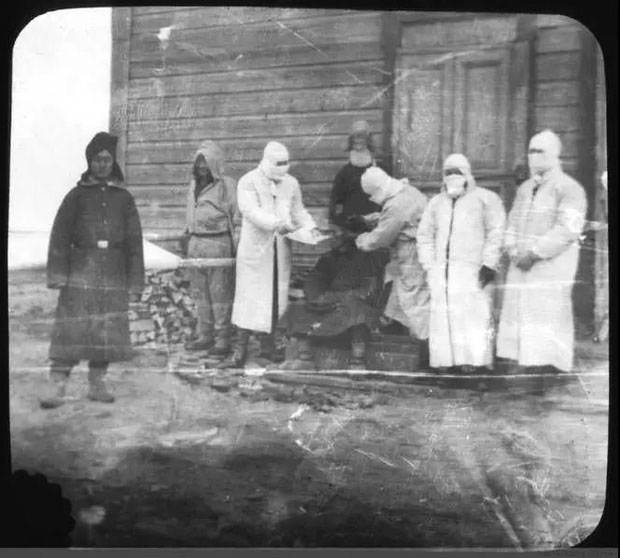The doctor was 'ahead of his time' Wu Lien-teh, who stopped the pandemic pneumonia more than a century ago
In the absence of antibiotics, Wu's physician still took progressive measures, ahead of his time to prevent an epidemic that killed 60,000 people.
Dr. Wu Lien-teh was born in 1879, has a Cantonese father (Chinese) and a Chinese mother born in Penang (Malaysia). Wu Lien-teh is also the first Chinese person to study medicine at the prestigious Cambridge University. In 1903, at the age of 24, Wu graduated back to his hometown of Kuala Lumpur, worked for the state and opened a private clinic.
In the winter of 1910, at the invitation of the Qing court, Dr. Wu and many foreign experts went to Harbin, northwest China, where an outbreak of pneumonia killed 60,000 lives. people in just 4 months.

Doctor Wu Lien Teh (1879–1960).
Immediately, Dr. Wu conducted an autopsy on modern standards - the first in China - for a female Japanese patient who died from an epidemic. As a result, Wu found Yersinia Pestis bacteria , which can be spread from person to person through saliva or sputum. The finding is startling and is suspected by colleagues at the same time, because they only know about the disease transmitted from mice or other animals to humans.
Among those questioning Wu was the famous French doctor Mesny. But many days later, Mesny himself died of pneumonia due to refusal to wear masks and preventive medical equipment. His death was extremely shocking in the international community.

Dr. Wu has been instrumental in preventing the spread of the disease on a global scale.(Photo: Sohu).
More broadly, the strange disease in Harbin has a mortality rate of more than 90%. Dr. Wu suspects it comes from the prevailing fur business. In an era when there was no specific antibiotic, there were many doubts, the young doctor was alert and determined to make a series of important decisions.
First, he persuaded Russian and Japanese officials to stop all trains to Harbin in 1911. Moreover, traffic in northwestern China was almost blocked. Still, the number of deaths increased during and after the lunar New Year, when the bodies were piled up in the snow.
Realizing this, Dr. Wu proposed to gather about 3,000 coffins for mass cremation at medical units. This measure appears to be effective in controlling epidemics. As of 3/31/1911 no more cases have been recorded.

The outbreak of pneumonia in Harbin broke out in the winter of 1910 and ended in the end of March next year.(Photo: Sohu).
Dr. Wu Lien-teh's records on disease control are now kept in the library of National University of Singapore.
According to Mr. Paul Tambyah, Chairman of the Asia Pacific Association of Microbiology and Infectious Diseases, Dr. Wu's knowledge and disease control therapies are accurate, valid to this day. Although the experience of dealing with the disease has existed since the Middle Ages in Europe and throughout Asia, Dr. Wu's record is very systematic, scientific and easy to refer to modern medicine.
According to Tambyah, if Dr. Wu did not suggest stopping transcontinental trains that year, the consequences would be unpredictable. These trains, which carry both people and goods to Europe, including furs from Marmota (rodents) produced in northwestern China.
Tambyah said that if the trains were still rolling, the disease would spread to Paris or Berlin in just a few days."The development of global traffic [at that time] will further spread the epidemic," - he said.

Dr. Wu (first, third from the left) and scientists at the International Conference on Disease, in China in 1911. (Photo: Sohu).
Leaving Harbin in 1911 after the epidemic, Dr. Wu Lien-teh was considered a "disaster winner" , when he was only 32 years old. In April 1911, he opened an international conference to exchange experiences with scientists from England, France, Germany, USA, China and many other countries. In 1935, Dr. Wu was the first Malaysian to receive a Nobel Prize for Medicine.
In his later life, Wu Lien-teh was respected and opened a prestigious clinic in Malyasia. He died in his hometown outside of Penang in 1960. In Harbin, a museum was built to commemorate the brave, talented doctor who won the disease exactly 110 years ago.

Doctor Wu Liande and wife Li Shuzhen.The physician has been admired by many generations for his efforts to prevent the disease in the past.
- What happens when time stops?
- Pneumonia: Causes, symptoms and treatment
- The 'super projects' were forgotten because ... ahead of time
- Wuhan virus and SARS - which one is more deadly?
- Instruct mothers to identify children with pneumonia with their eyes at home
- Vegetables are good for pneumonia
- Corona medications are available but not yet tested
- Successfully decipher the infamous doctor's prescription
- Mushroom species are as expensive as net gold on Hoang Lien Son range
- How to prevent pneumonia when the weather is seasonal
- Simple way to prevent pneumonia for children during the season
- Wuhan virus prevention: Dr. Pham Nguyen Quy pointed out the harmful effects when sneezing covering his nose and mouth with his hands
 The most famous scientific failures in history
The most famous scientific failures in history Mysterious genius mechanic and the machine froze time
Mysterious genius mechanic and the machine froze time The son carries the 'bad gene' of genius Albert Einstein
The son carries the 'bad gene' of genius Albert Einstein Isaac Newton
Isaac Newton